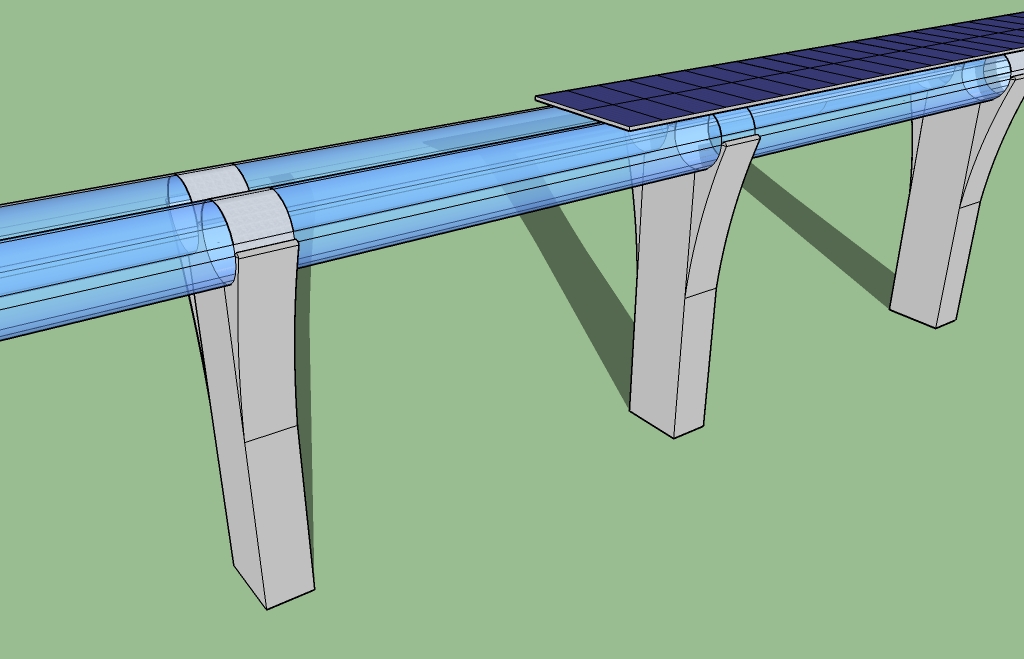Elon Musk recently said that in his view, all forms of transportation will eventually become electric, except for orbital flight which will always be done with rockets. This immediately struck me as incorrect.
The more I think about it, the more wrong he seems about rockets.
NASA is currently developing the SLS or Space Launch System. This new technology is designed to lift heavier loads than ever into orbit and beyond, up to 130 tons.
It strikes me that if you ever want to launch things on the scale of an aircraft carrier, or even just the size of a jumbo jet, radical rethinking is required.
 Project Orion attempted to tackle this issue in the 1950s with lots of nuclear explosions taking the place of rocket propellant. This approach may have worked but with the obvious side-effect of leaving the world devastated by nuclear fallout.
Project Orion attempted to tackle this issue in the 1950s with lots of nuclear explosions taking the place of rocket propellant. This approach may have worked but with the obvious side-effect of leaving the world devastated by nuclear fallout.
Even the current generation of tiny hundred-ton rockets causes a huge amount of waste and pollution during every launch. The only approach which is sustainable is to go electric. The problem is that mankind has never produced an effective orbital or even sub-orbital launch design which relies on self-powered electric flight, but maybe there is another way.
 The vast majority of fuel and energy is used in initial take-off. Mass drivers use a length of high speed rail to accelerate and launch a vehicle without it needing to be able to execute the initial take-off under its own power. This dramatically decreases the power requirements for flight. This technique is currently used on aircraft carriers to help jets get off the ground with very limited space to accelerate. The problem with using mass drivers for orbital flight is that the speeds required would cause the vehicle to vaporize from atmospheric friction at close-to-sea-level atmospheric pressures.
The vast majority of fuel and energy is used in initial take-off. Mass drivers use a length of high speed rail to accelerate and launch a vehicle without it needing to be able to execute the initial take-off under its own power. This dramatically decreases the power requirements for flight. This technique is currently used on aircraft carriers to help jets get off the ground with very limited space to accelerate. The problem with using mass drivers for orbital flight is that the speeds required would cause the vehicle to vaporize from atmospheric friction at close-to-sea-level atmospheric pressures.
My solution is inspired by none other than Elon Musk himself, with a little help from another hero of mine.
 Musk’s hyperloop takes advantage of a low-pressure tube to reduce the effects of atmospheric friction around vehicles. This allows the vehicles to accelerate more quickly and reach much higher speeds than would normally be possible at ground level. These trains would use nothing but electromagnetic tracks to accelerate commuters and goods across the planet at speeds up to five times the current records for high speed rail.
Musk’s hyperloop takes advantage of a low-pressure tube to reduce the effects of atmospheric friction around vehicles. This allows the vehicles to accelerate more quickly and reach much higher speeds than would normally be possible at ground level. These trains would use nothing but electromagnetic tracks to accelerate commuters and goods across the planet at speeds up to five times the current records for high speed rail.
 Steel Balloons
Steel Balloons
Buckminster Fuller showed that enclosed geodesic spheres with a diameter of around a mile would be able to achieve flight with an internal air temperature of just a few degrees above ambient temperatures, and with a larger differential they could be much smaller, powered passively by RTeGs or solar collectors.
My solution is to combine the two concepts; build a geodesic sphere with a hyperloop-style tube through its vertical axis. The sphere would float to a high altitude and stay there indefinitely because of its buoyancy. Then simply fly a low speed aircraft into the tube to have it accelerated electrically by the infrastructure of the sphere and propelled into orbit or beyond without the use of any propellants or polluting fuels.
This concept scales effectively and can work on any sized load or vehicle for exponentially lower cost than today’s one-shot billion dollar rockets, or even tomorrow’s lower-cost reusable rockets.
 It would be a Panama Canal to the stars, and allow us to jump across an otherwise insurmountable obstacle; electric-only orbital flight.
It would be a Panama Canal to the stars, and allow us to jump across an otherwise insurmountable obstacle; electric-only orbital flight.